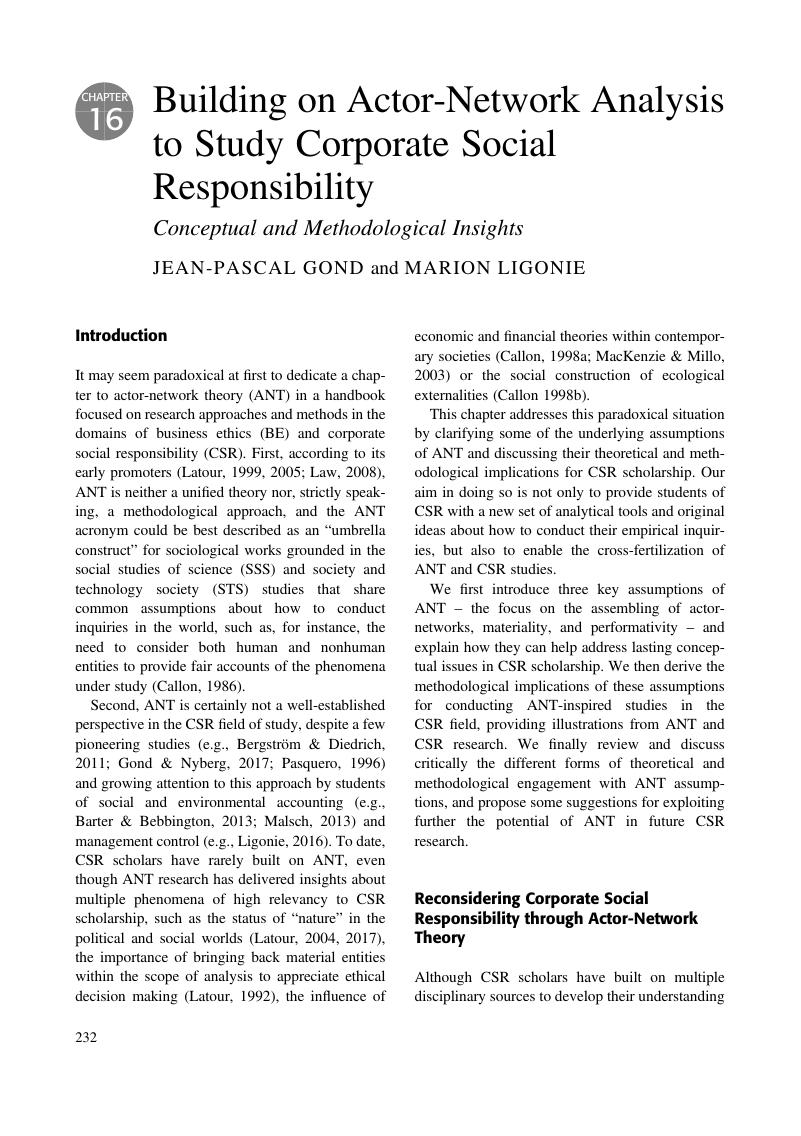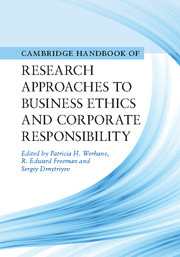Book contents
- Cambridge Handbook of Research Approaches to Business Ethics and Corporate Responsibility
- Cambridge Handbook of Research Approaches to Business Ethics and Corporate Responsibility
- Copyright page
- Contents
- Figures
- Tables
- Contributors
- Introduction
- Part I Philosophical Approaches
- Part II Empirical Approaches
- Qualitative Approaches
- Quantitative and Experimental Approaches
- Contemporary Approaches
- Case Study Approaches
- Chapter 14 Wide Reflective Equilibrium as a Case-Based Research Approach to Business Ethics
- Chapter 15 Casuistry as a Case-Based Research Approach to Business Ethics
- Chapter 16 Building on Actor-Network Analysis to Study Corporate Social Responsibility
- Part III A Researcher in the Spotlight
- Index
- References
Chapter 16 - Building on Actor-Network Analysis to Study Corporate Social Responsibility
Conceptual and Methodological Insights
from Case Study Approaches
Published online by Cambridge University Press: 10 November 2017
- Cambridge Handbook of Research Approaches to Business Ethics and Corporate Responsibility
- Cambridge Handbook of Research Approaches to Business Ethics and Corporate Responsibility
- Copyright page
- Contents
- Figures
- Tables
- Contributors
- Introduction
- Part I Philosophical Approaches
- Part II Empirical Approaches
- Qualitative Approaches
- Quantitative and Experimental Approaches
- Contemporary Approaches
- Case Study Approaches
- Chapter 14 Wide Reflective Equilibrium as a Case-Based Research Approach to Business Ethics
- Chapter 15 Casuistry as a Case-Based Research Approach to Business Ethics
- Chapter 16 Building on Actor-Network Analysis to Study Corporate Social Responsibility
- Part III A Researcher in the Spotlight
- Index
- References
Summary

- Type
- Chapter
- Information
- Cambridge Handbook of Research Approaches to Business Ethics and Corporate Responsibility , pp. 232 - 246Publisher: Cambridge University PressPrint publication year: 2017



